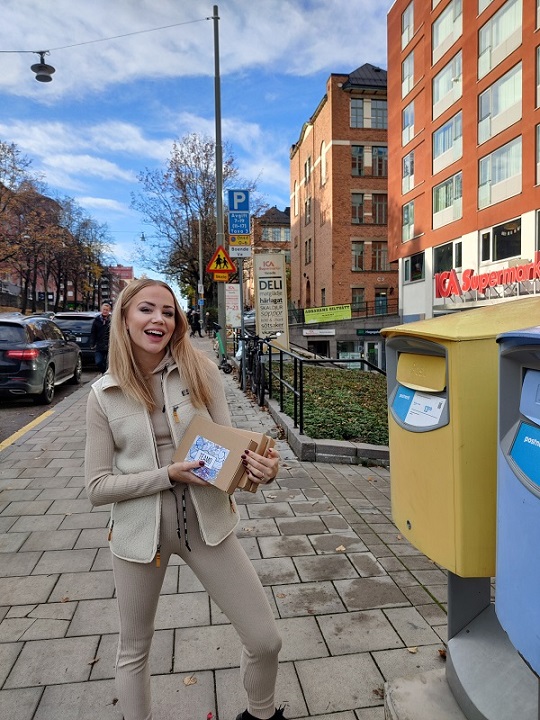What is an MVP (minimum viable product) and how do you build it?
- Individuals and interactions over processes and tools
- Working software over comprehensive documentation
- Customer collaboration over contract negotiation
- Responding to change over following a plan
What is an MVP?


How do you build an MVP?
- Market research
- Ideation and value formulation
- Map out user flows
- Prioritize MVP features
- Define KPIs
- Launch MVP
- Everything should start with research and getting to know the market and customer. Answer the questions: what do the customers want, who is the target audience, what substitute and complementary products exist, what competitors exist, what are the changes in the market, environment and even from the government? If it is an IT product, what platform(s), i.e web, mobile app or software and what marketing channel(s) are used by the target audience and so forth?
- You could try to “be the customer” yourself and solve the customer problem on your own, which will give you a lot of insights. You should also try the competitors’ products.
- You could read up on market reports, customer research, experts’ blogs, media coverage, listen to podcasts and so on.
- You can use statistical data from governments or look into search behaviour and SEO, for example. I use the SAAS product Mangools for this purpose.
- You could for example use: Mangools, Google trends and search the web in general.
- Answer the question: From the user’s perspective, what is the problem you are trying to solve with this product? Try to sympathize and form an understanding of the forces that are driving the needs of the users. “Customer obsession” is a frequently used term, which I try to practice a lot. Also, if there are more people involved in the product development than yourself, make sure to establish “the WHY” with everyone involved early on.
- Here you can start formulating a concept, an elevator pitch and a long-term vision for the product.
- I would also recommend stating a hypothesis in this step, which you later try to prove or reject with real data.
- You could also create a first visual presentation in the form of a quick hand-drawn sketch or prototype.
- It could also be good to have the constraints in mind of the product. For example, it could be technical, compliance or branding (I write more about this in the next paragraph).
- A pitch deck could for example be made in: Google slides or Powerpoint and the rest in text documents. I usually use Google docs, but there are many alternatives.
- Draw a first high-level customer journey with different user flows in a diagram in draw.io or a similar program.
- Here you can start formulating a concept, an elevator pitch and a long-term vision for the product.
- When designing the user flows, you can work with design thinking and customer research. For example in the form of focus groups, Google forms and such to find out more about your customer, their needs and behaviours.
- These are just example of suitable tools: Draw.io, Swimlanes.io, Google forms, Wireframe.cc and Lucidchart.
- With an MVP, you can always assume that time is the most limiting factor. However, both the time frame, budget and even scope should be as small as possible. The scope is what you usually can and should compromise the most with.
- It is essential to decide and, if you are more than one person, agree on what are and what are not MVP features for your product. There are usually always stakeholders with an interest in your product and who want to add more to the scope. However, the non-MVP features are gathered in a backlog for later implementation and to which you can refer when the stakeholders wonder where their favourite feature disappeared to. With a backlog, you can reduce the scope of the MVP for practical purposes without people feeling that they have not been listened to or that their particular idea was not great. You need to scale down in order to be able to focus and deliver anything at all and that is what an MVP and a backlog will help you achieve. Therefore, tell your stakeholders that some features are non-MVP and will be placed in the backlog to be prioritized for later implementation.
- Start building a product backlog of the non-MVP features. It could be good to include the following in your backlog: feature description, risk, business value, dependencies, size and date (when applicable). Dependencies could include who needs to be involved in the development. The size is how big of a workload it is (in my opinion, it is enough with a very rough estimate - for example in t-shirt sizes of small, medium and large). From my experience, I have seen a general division among those who think size estimations is beneficial versus unbeneficial to include. However, try to refrain from turning it into project management - with MVPs, nothing is written in stone, everything can and should be questioned and it is a continuous and never-ending work in progress.
- Who should measure what, how, how often and why?
- Define points of reference. It could be historical reference points such as internal or external data points of previous launches of other or similar products. It could also be extrapolated data points and assumptions of future growth of the product. It can be good to separate what figures you would want in a dream scenario and what are realistic, as these can differ a lot. Read my previous article on Data-driven decision making for inspiration.
- You might be able to follow up on the KPIs in these tools: Google analytics, Amplitude, Kibana and Splunk.
- Run tests before release. It can be good to release to friends and family in the first iteration. This in order to find improvements which are “low-hanging fruits” and obvious flaws, which easily can be corrected before any form of marketing campaign is kick-started.
- Even with the marketing efforts following the external launch, start small and evaluate what works. Marketing is an extremely important and often overlooked step of product development and should be included from the start. Nobody is going to be able to find your product if you do not reach them and nothing “sells itself if no one sees it” from the start.

To keep in mind in a technical MVP
- Break down the product in smaller pieces and define user stories and tickets (the smallest piece of a development task). Then you start coding, and you can go about this one ticket at a time, if you want. The design usually starts with designing one view (a snapshot of the user journey) at a time. As an example, one could start with coding and designing the first interaction with the customer, or the most important interaction with the customer.
- For the break-down of the work, you could use the tools I mentioned earlier: Trello, Jira, Basecamp and Asana. Design tools could be: Figma, Sketch and Invision and development tools could be too many and too complex to describe in this article. However, as an example of a small web development project, I use Sublime for coding, Postman for experimenting with API integrations and Github for pushing my code to production and Gandi for web hosting.
For example, what is the technical stack you might already have and the upcoming choices of technical stack?
What data do you have and can you obtain?
Also, what can and should we build ourselves and what integrations with other systems/programs/apps/APIs do we already have or should have?
For example, all digital products are somewhat constrained by GDPR in these times. Companies’ cookie and privacy policies are literally everywhere on the web. For example, if you are to collect personal information, the first thing in the data collecting flow needs to be a customer consent to using their personal data. This is something to keep in mind which might limit the product and the artistic freedom.
The profile of the company
The marketing campaigns of the product
Cultural, moral and ethical aspects of the product
Benefits of MVPs
- It is the quickest and cheapest way of turning ideas into products and to get proof of concept. The top reason why startups fail is "no market need", according to this report by CB Insights. Hence, you would want to get proof of concept as early as possible.
- If you are going to fail, it forces you to fail quicker than you would have with other approaches. A consequence of the point I made above is that you get enough information to know whether or not to NOT keep developing the product. As I stated before - this is just as important a result, since it frees up time and money to work with more promising products without having spent too much on one which will not live up to your expectations or hopes. This concept is called “fail quickly”, which I wrote more about previously in this article.
- It forces you to focus on and deliver the core functionality first (nothing more, nothing less).
- You get access to data from REAL customers (cannot stress this enough).
- You get access to data EARLY, which enables you to work data, test and hypothesis driven.
- You come in contact with customers and can ask for feedback early in order to obtain customer-driven development. You might even obtain truly engaged and invested customers in your early adopters.
- You are forced to formulate a target group and market. The target group should never be ‘everyone’. It is usually better to start with a small and niched target group since that usually makes the MVP scope smaller as well. The more customers you are trying to solve a problem for, the bigger the scope usually gets.
- You do not only receive feedback early from customers, but also from your co-workers, which could accelerate your work.
- You find out which marketing strategies work for your product and your target audience.
Final statement


By subscribing, you will get notified when my next content is published before everyone else.